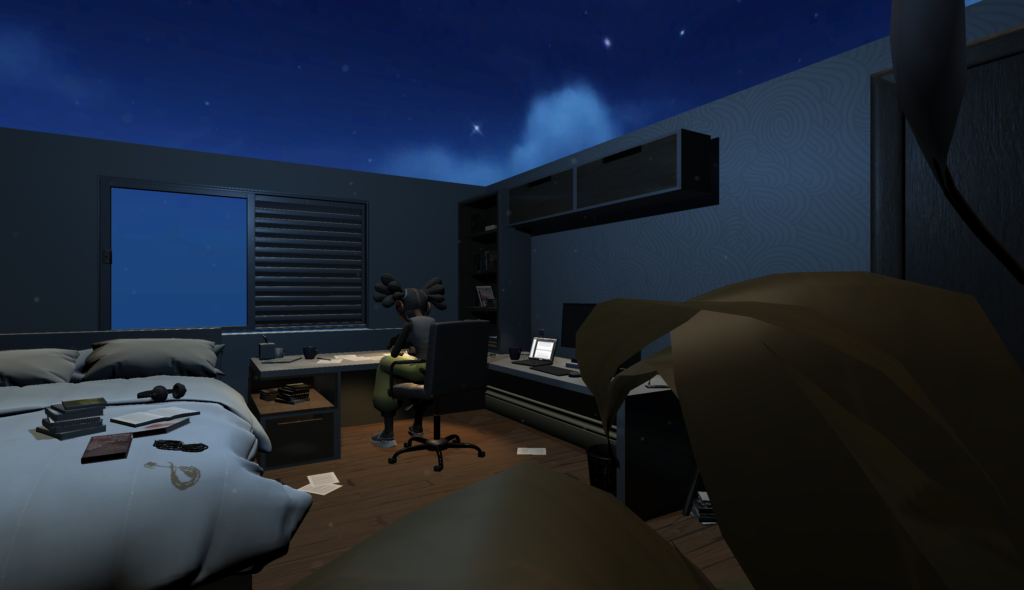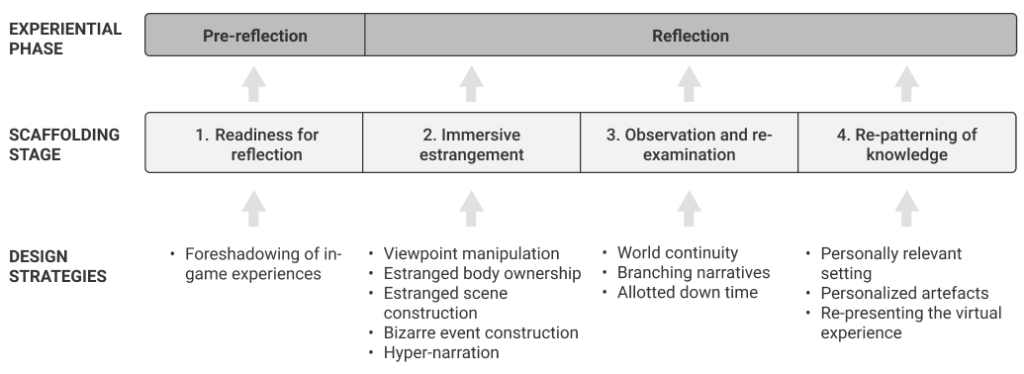Designing for reflection has gained significant interest in the field of Human Computer Interaction (HCI). Consequently, reflection has been supported by technology in numerous ways, for example, by artefacts supporting reflection through user-created media or reflection upon system-collected data in personal informatics. However, supporting reflection appears to be one of the most difficult challenges for designers. In this project we explore new ways of designing for reflection using virtual reality (VR) which, as a medium, may present a unique set of challenges.


While immersive VR features capabilities to create embodied experiences and a state of flow, in VR this state of flow can potentially parallel a user’s loss of awareness of their physical surroundings, sense of time, concern for self and physical body. Therefore, high immersion may hinder opportunities for users to pause and reflect during the experience. It appears that we must balance tensions between immersion and reflection. In this work we draw upon the theatre to inform designing VR for reflection. Both the theatre and HCI systems, such as VR, construct representational proxies that are not identical to real life but can have real-world consequences. Hence, we borrowed practices from the avant-garde theatre to inform a conceptual model for facilitating reflection in VR. We also co-designed a VR prototype to explore this model through user testing, which will reveal the feasibility of the approach and potential futures of this work.
People
- Jade Jiang
- Dr Naseem Ahmadpour
Publications
- Jiang, J., Ahmadpour, N. (2021). Beyond Immersion: Designing for Reflection in Virtual Reality. In Proceedings of Australian Computer-Human Interaction Conference (OzCHI’21), ACM.
